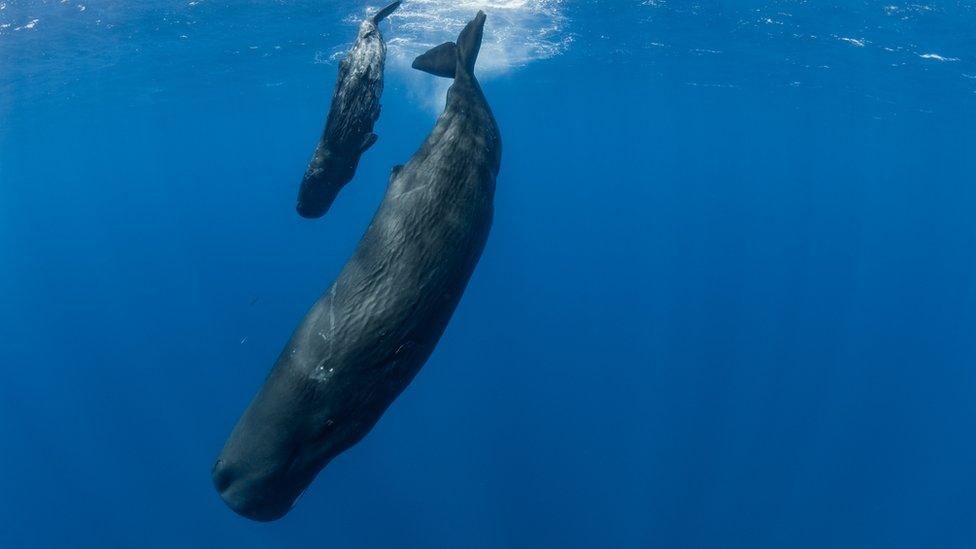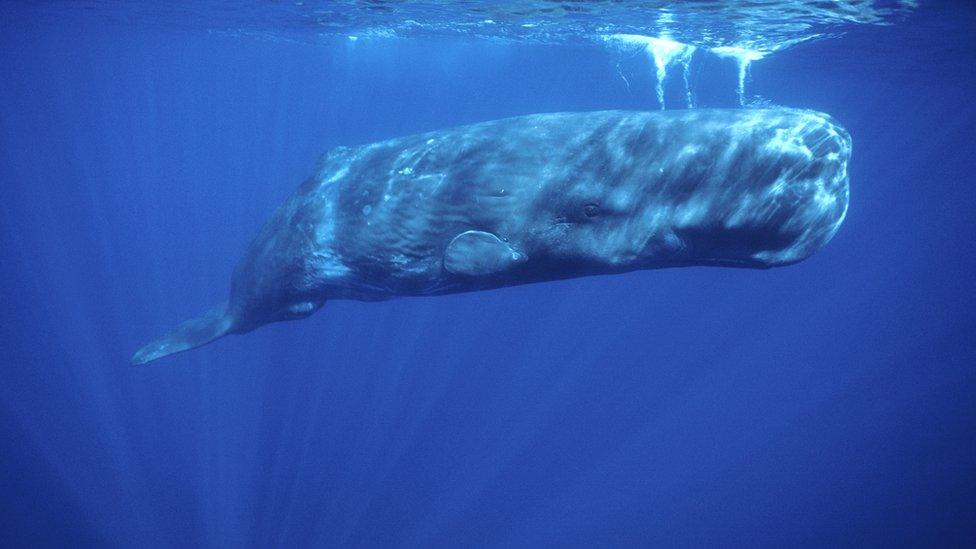Endangered Mediterranean sperm whales monitored by robots
- Published
- comments

Robots that can glide through the water are monitoring the sounds and clicks of sperm whales to figure out their daily habits.
The research led by the University of East Anglia (UEA) may help with the conservation and protection of this threatened species.
The Mediterranean sperm whale has been listed as endangered since 2006 as a result of human activities; including pollution, whale watching and the animals getting caught in illegal fishing nets.
There are now fewer than 2500 adult Mediterranean sperm whales left in the world.
Lead researcher Pierre Cauchy, said the robots' findings would help conservation efforts:
"Increasing observation efforts, particularly in winter months, will help us better understand habitat use, and identify key seasonal habitats to allow appropriate management of shipping and fishing activities."
What has been discovered?
Turns out if you don't like early mornings you might actually have something in common with a sperm whale.
The new research has shown that the creatures do not like eating their breakfast early at dawn.
Sperm whales eat squid, octopus, fish, shrimp, crab and even small sharks.
To collect the information, the underwater robots travelled through several miles of the ocean following the whales during winter months and listened to them communicating.
The clicking sounds the whales make are used for social interaction and echolocation which helps the animals figure out where other objects are under water.

The whales make the clicking sounds around 60% of the time, but the the robots specifically listened out for highly powerful and directional clicks produced when the creatures were searching for food.
The sounds meant the sperm whales could be identified and detected up to a distance of 12.5 miles (20km) away.
The recordings confirmed several sperm whales in the north west Mediterranean Sea just south of France and Spain in an area called the Gulf of Lion and next to the north east of Italy in an area named the Ligurian Sea.
The robots discovered that the whales have different eating strategies depending on the part of the ocean they're swimming about in.
In the Ligurian Sea, the whales scatter from their group, known as a pod, and look for food individually at all times of day.
In the Gulf of Lion, however, larger groups target lots of the ocean for food, and are less active first thing in the morning.
- Published2 September 2019

- Published29 July 2020

- Published29 July 2020

